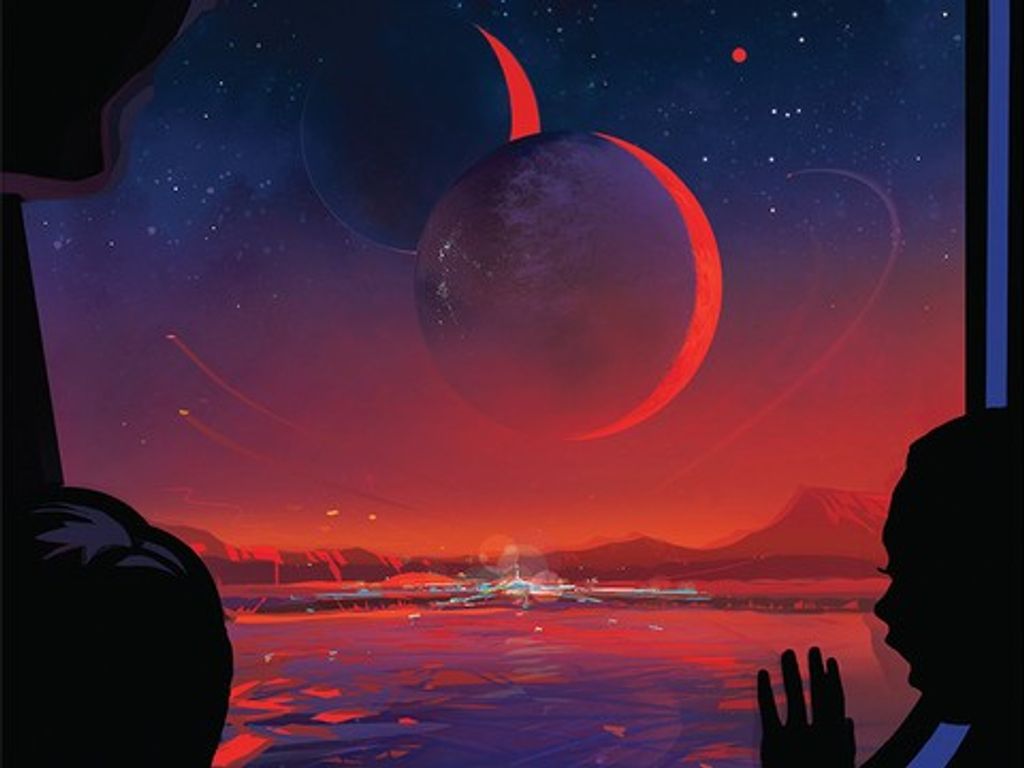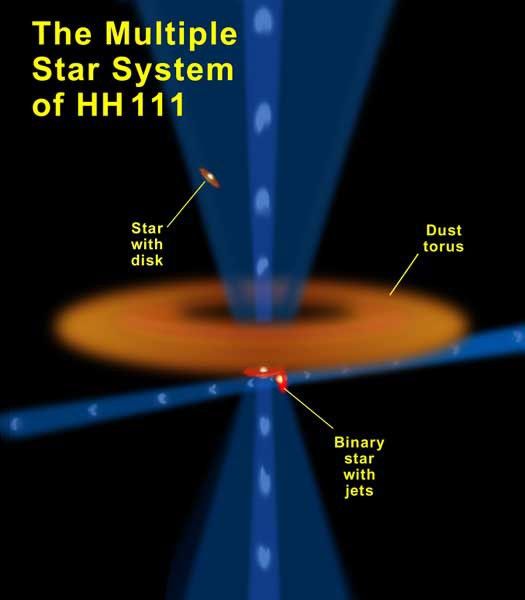1 min read
Three Stars Blast 12-Light-Year-Long Jets of Gas Into Space

This composite image, made with two cameras aboard NASA's Hubble Space Telescope, shows a pair of 12 light-year-long jets of gas blasted into space from a young system of three stars. The jet is seen in visible light, and its dusty disk and stars are seen in infrared light. These stars are located near a huge torus, or donut, of gas and dust from which they formed. This torus is tilted edge-on and can be seen as a dark bar near the bottom of the picture.
Apparently, a gravitational brawl among the stars occurred a few thousand years ago and kicked out one member (on the left edge of the bright blob above the disk). As a result, the two other stars were joined together as a tight binary pair and flew off in the opposite direction, and appear as a red blob below the disk.
The huge jet comes from one of the stars in this tight binary pair. The star spews out streams of gas in opposite directions, like water from a garden hose. It is not a smooth flow, but rather happens episodically, creating lumps of gas that fly across space at over one million miles per hour. These gaseous cannonballs catch up with and "rear-end" slower moving blobs, creating a pattern that resembles a string of Christmas lights embedded in the jet.
The visible-light image was taken with Hubble's Wide Field Planetary Camera 2 in Nov. 1998 and the infrared image by Hubble's Near Infrared Camera and Multi-Object Spectrometer in Mar. 1998. The disk and associated stars are embedded in a large dark cloud and are only visible at infrared wavelengths.
About the Object
- R.A. PositionR.A. PositionRight ascension – analogous to longitude – is one component of an object's position.05h 51m 44.2s
- Dec. PositionDec. PositionDeclination – analogous to latitude – is one component of an object's position.02° 48' 33.99"
About the Data
- Data DescriptionData DescriptionProposal: A description of the observations, their scientific justification, and the links to the data available in the science archive.
Science Team: The astronomers who planned the observations and analyzed the data. "PI" refers to the Principal Investigator.The research team consists of Bo Reipurth, Ka Chun Yu and John Bally from the University of Colorado; Steve Heathcote from Cerro Tololo Inter-American Observatory, and Luis Felipe Rodriguez from the Universidad Nacional Autonoma de Mexico (UNAM)
- Object NameObject NameA name or catalog number that astronomers use to identify an astronomical object.HH111
- Release DateMarch 16, 2000
- Science ReleaseHubble Finds Young Stars in Cosmic Dance
- CreditNASA and B. Reipurth (CASA, Univ. of Colorado)
Share
Details
Claire Andreoli
NASA’s Goddard Space Flight Center
Greenbelt, Maryland
claire.andreoli@nasa.gov

































